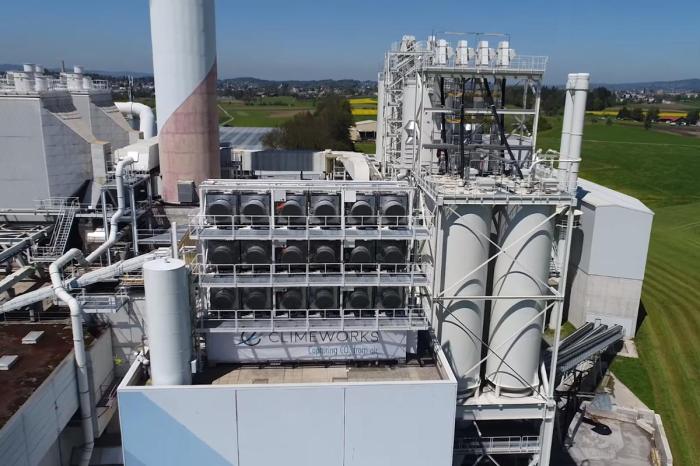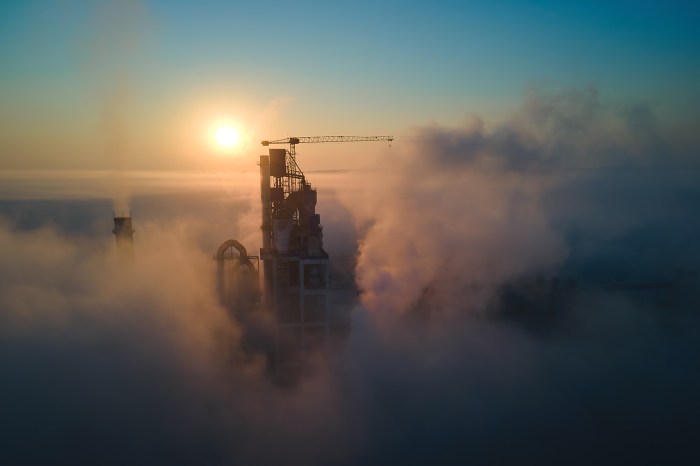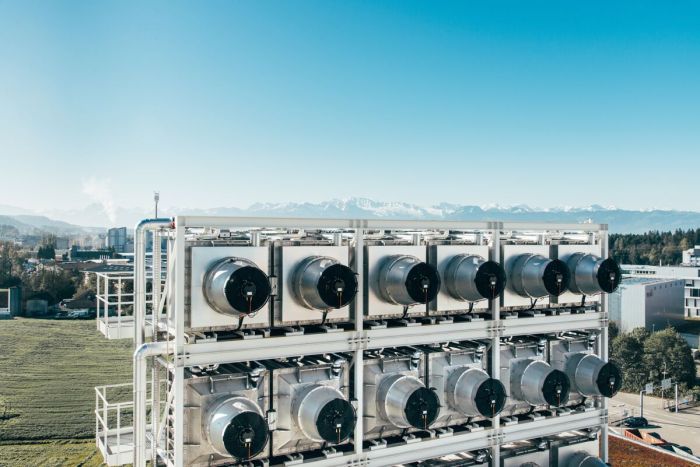Swiss startup Neustark Carbon Capture Concrete is revolutionizing the construction industry with its innovative approach to sustainability. Neustark’s mission is to create a more environmentally friendly future by developing concrete that actively captures and stores carbon dioxide, a major contributor to climate change.
This Swiss startup is at the forefront of a growing movement within the construction sector, highlighting the potential of innovation to address environmental challenges.
Neustark’s carbon capture concrete technology is based on the principle of mineral carbonation. The process involves capturing CO2 from industrial sources and reacting it with specific minerals within the concrete mixture. This reaction permanently traps the CO2 within the concrete, effectively removing it from the atmosphere.
The result is a concrete that not only reduces the carbon footprint of construction but also actively contributes to carbon sequestration.
Introduction to Neustark: Swiss Startup Neustark Carbon Capture Concrete

Neustark is a Swiss startup revolutionizing the construction industry with its innovative carbon capture concrete. The company’s mission is to create a sustainable future by reducing the environmental impact of concrete production. Neustark envisions a world where construction materials are not only durable but also environmentally friendly, contributing to a greener and more sustainable built environment.
Neustark’s Focus on Sustainable Construction Materials
Concrete is a vital component of modern infrastructure, but its production contributes significantly to global greenhouse gas emissions. Neustark’s solution lies in developing a new type of concrete that actively captures carbon dioxide from the atmosphere during the production process.
This innovative approach addresses the environmental concerns associated with traditional concrete production while providing a high-performance and durable material.
The Swiss Startup Ecosystem and its Role in Innovation
Switzerland is renowned for its robust and innovative startup ecosystem. The country provides a supportive environment for entrepreneurs, with access to world-class research institutions, skilled talent, and a strong focus on sustainability. Neustark’s emergence within this ecosystem highlights the potential for Swiss startups to drive positive change in various industries.
Carbon Capture Concrete Technology

Neustark’s carbon capture concrete technology is a groundbreaking innovation that addresses the significant environmental impact of traditional concrete production. By incorporating a unique process for capturing and storing carbon dioxide (CO2) within the concrete itself, Neustark offers a sustainable alternative to conventional construction materials.
The Science Behind Carbon Capture Concrete
Neustark’s technology leverages the chemical properties of certain minerals to capture and permanently store CO2 within the concrete matrix. The process involves incorporating specific mineral additives into the concrete mix during production. These additives, typically calcium-based minerals, react with CO2 in the atmosphere, forming stable carbonate compounds that are permanently locked within the concrete structure.
This reaction effectively removes CO2 from the atmosphere and prevents its release back into the environment.
CO2 Capture and Storage in Concrete
The process of capturing and storing CO2 within Neustark’s concrete can be summarized as follows:
- Mineral Additives:Neustark’s concrete incorporates specific mineral additives, such as calcium-based minerals, into the concrete mix during production.
- CO2 Absorption:The mineral additives react with CO2 in the atmosphere, forming stable carbonate compounds.
- Permanent Storage:The carbonate compounds are permanently locked within the concrete structure, preventing the release of CO2 back into the environment.
Environmental Impact of Neustark’s Concrete, Swiss startup neustark carbon capture concrete
Neustark’s carbon capture concrete technology offers significant environmental benefits compared to traditional concrete. The process effectively reduces the carbon footprint of concrete production by capturing and storing CO2, mitigating the release of greenhouse gases. This reduction in emissions contributes to a more sustainable construction industry and helps address climate change.
Benefits of Neustark’s Concrete
Neustark’s carbon capture concrete offers a compelling solution to the environmental challenges associated with traditional concrete production. This innovative technology not only reduces the carbon footprint of construction projects but also paves the way for a more sustainable future.
Environmental Impact
Neustark’s carbon capture concrete significantly reduces greenhouse gas emissions, a critical factor in combating climate change. The technology captures CO2 during the concrete production process, effectively offsetting the emissions generated. This approach contributes to a greener building industry and a more sustainable environment.
Sustainable Building Practices
Neustark’s concrete plays a crucial role in promoting sustainable building practices. Its reduced carbon footprint aligns with the growing demand for environmentally responsible construction projects. By incorporating this innovative material, architects and builders can achieve LEED certification and contribute to a more sustainable built environment.
Browse the multiple elements of how to protect workers from ai displacing jobs to gain a more broad understanding.
Economic Benefits
Neustark’s carbon capture concrete offers economic benefits alongside its environmental advantages. By reducing the carbon footprint of construction projects, developers can potentially access incentives and subsidies offered by governments and organizations promoting sustainable practices. Furthermore, the technology’s potential for cost-effectiveness can make it a viable alternative to traditional concrete, driving economic growth in the construction sector.
Durability and Performance
Neustark’s concrete exhibits excellent durability and performance, comparable to traditional concrete. Its robust properties ensure the longevity and structural integrity of buildings, making it a reliable choice for various construction applications. The technology’s ability to withstand harsh weather conditions and heavy loads further enhances its practicality and appeal.
Applications in Construction
Neustark’s carbon capture concrete finds applications across a wide range of construction projects, from residential buildings to commercial structures and infrastructure projects. Its versatility and compatibility with existing construction methods make it a valuable tool for architects and engineers seeking to reduce their environmental impact.
Applications and Market Potential

Neustark’s carbon capture concrete offers a wide range of applications across various sectors, driving significant market growth potential. This innovative material not only reduces the environmental impact of construction but also presents unique advantages for specific applications.
Market Size and Growth Potential
The global market for carbon capture concrete is expected to experience substantial growth in the coming years, driven by increasing awareness of climate change and the need for sustainable building materials. The market is projected to reach [insert market size prediction] by [insert year].
The construction industry is responsible for a significant portion of global greenhouse gas emissions, making it a critical target for carbon reduction efforts.
- Rising demand for sustainable building materials in response to stringent environmental regulations and consumer preferences for eco-friendly products is driving market growth.
- Government initiatives and financial incentives for adopting sustainable construction practices further contribute to the market’s expansion.
- Increasing investments in research and development for carbon capture technologies are leading to advancements in concrete production, enhancing its efficiency and reducing its carbon footprint.
Competitive Landscape
The carbon capture concrete market is becoming increasingly competitive, with several key players emerging in the industry. These companies are actively developing and deploying innovative technologies to capture and store carbon emissions during concrete production.
- Neustark, a leading innovator in the field, has developed a proprietary technology that enables the capture and permanent storage of carbon dioxide during the concrete manufacturing process.
- [Company 2], another prominent player, focuses on developing sustainable concrete solutions using alternative materials and processes to reduce carbon emissions.
- [Company 3], a research-driven organization, is dedicated to advancing carbon capture technologies for the construction industry, fostering collaborations and knowledge sharing.
Challenges and Future Developments
While Neustark and the carbon capture concrete industry hold immense potential, they also face several challenges that require innovative solutions and continued research. These challenges are intertwined with the ongoing efforts to refine and scale up this groundbreaking technology.
Challenges Facing Neustark and the Carbon Capture Concrete Industry
The carbon capture concrete industry faces a multitude of challenges that need to be addressed to achieve widespread adoption.
- Scaling Up Production:The current production capacity of carbon capture concrete is limited. Scaling up production to meet the demand of the construction industry is a major hurdle. Neustark is working on developing larger-scale production facilities to address this challenge.
- Cost Reduction:The cost of producing carbon capture concrete is currently higher than traditional concrete. Reducing the cost of production is crucial for making this technology more accessible and competitive. Neustark is continuously exploring cost-effective solutions, including optimizing production processes and sourcing materials.
- Performance and Durability:While initial research shows promising results, further testing and validation are needed to ensure the long-term performance and durability of carbon capture concrete. Neustark is collaborating with independent research institutions to conduct comprehensive testing and analysis.
- Public Awareness and Acceptance:Raising public awareness about the benefits of carbon capture concrete and addressing concerns about its potential environmental impact are essential for its successful adoption. Neustark is actively engaging with stakeholders, including policymakers, architects, and builders, to promote the technology.
- Regulatory Framework:Establishing clear and supportive regulatory frameworks that encourage the development and use of carbon capture concrete is crucial. Neustark is actively engaging with relevant authorities to ensure that regulations are aligned with the technology’s potential.
Research and Development Efforts
Significant research and development efforts are underway to address the challenges facing the carbon capture concrete industry. These efforts focus on:
- Improving Efficiency and Cost Reduction:Researchers are exploring new materials and production processes to enhance efficiency and reduce the cost of carbon capture concrete. This includes optimizing the carbon capture process, developing new binders, and exploring alternative sources of raw materials.
- Performance and Durability Testing:Rigorous testing is being conducted to evaluate the long-term performance and durability of carbon capture concrete under various environmental conditions. This includes studying its resistance to weathering, temperature fluctuations, and other factors.
- Life Cycle Analysis:Researchers are conducting comprehensive life cycle analyses to assess the environmental impact of carbon capture concrete throughout its entire lifecycle, from raw material extraction to disposal. This includes evaluating the carbon footprint of the production process, transportation, and potential end-of-life scenarios.
- Market Adoption and Scalability:Research is being conducted to identify the best applications for carbon capture concrete and to develop strategies for scaling up production to meet the growing demand. This includes exploring new markets and developing partnerships with construction companies.
Future Potential and Advancements
The future of carbon capture concrete technology holds immense promise for sustainable construction. Here are some potential advancements:
- Enhanced Carbon Capture Efficiency:Future developments may lead to more efficient carbon capture processes, resulting in a higher percentage of carbon dioxide being captured and stored within the concrete. This could significantly reduce the carbon footprint of the construction industry.
- New Materials and Production Processes:Research is ongoing to develop new materials and production processes that can further enhance the performance and durability of carbon capture concrete while reducing its cost.
- Integration with Smart Cities:Carbon capture concrete could be integrated with smart city initiatives to create sustainable and resilient infrastructure. This could include using the technology to develop buildings that can capture and store carbon dioxide, reducing their environmental impact.
- Circular Economy Applications:Carbon capture concrete could play a crucial role in circular economy models, enabling the reuse and recycling of construction materials. This could lead to a more sustainable and resource-efficient construction industry.





